Yokohama’s USD 905 Million Goodyear Acquisition Targets Global OTR Market Growth
- By Sharad Matade
- August 12, 2025
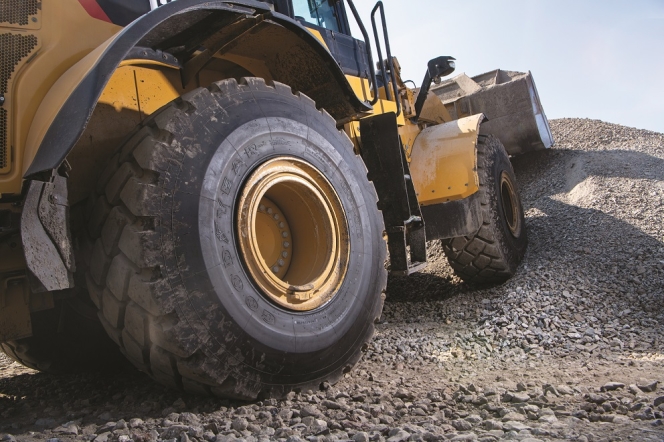
The Japanese Tyre Maker Combines Operations, Eyes Second-Place Position in Off-The-Road (OTR) Tyre Segment.
Yokohama Rubber Co. is betting big on heavy machinery tyres. The Japanese manufacturer completed its USD 905 million acquisition of Goodyear Tyre & Rubber Co.’s off-the-road (OTR) tyre business in February and has already begun an aggressive expansion strategy that includes a USD 35 million Romanian plant purchase and the appointment of veteran industry executive Loic Ravasio to lead the combined operations.
These moves elevate Yokohama to third in the global OTR market, but ambitions are set higher. Loic Ravasio, now president of Yokohama’s combined OTR business, has made it clear that the goal is to become the world’s second-largest supplier of specialised tyres for mining and construction.
“The essence of the acquisition is to grow and gain market share and not only to maintain our 3rd position but aim to be number two in the near future,” Ravasio said. “We have the people, the knowledge and the products for it.”
The acquisition represents the largest strategic investment under Yokohama’s ‘Hockey Stick Growth’ initiative, part of its Yokohama Transformation 2026 medium-term management plan. The deal brought Yokohama not just Goodyear’s extensive product lineup – spanning tyre diameters from 25 inches to ultra-large 63-inch models – but also advanced manufacturing technologies, established brand recognition and approximately 500 specialised employees.
STRATEGIC COMPLEMENTARITY
Goodyear OTR achieved USD 678 million of annual sales as of fiscal 2023, bringing important scale to Yokohama’s off-highway tyre business. However, above and beyond the revenue increase, Ravasio highlights how the two operations are complementary both geographically and in terms of product specialisation.
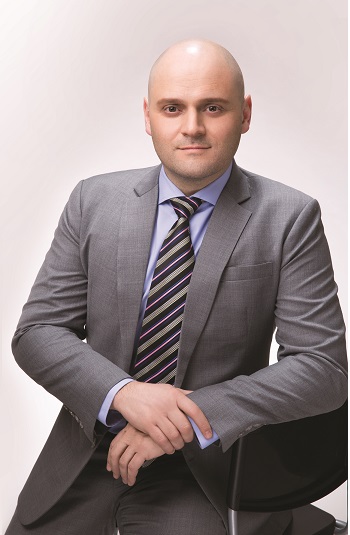 “The two businesses literally complement each other from a product point of view as well as presence point of view,” Ravasio explained. “Goodyear OTR is strong in Europe, APAC and Canada, whereas Yokohama OTR is strong in the US and Japan. Goodyear OTR has excellent ultra large haulage tyres, whereas Yokohama has mobile crane and port tyres.”
“The two businesses literally complement each other from a product point of view as well as presence point of view,” Ravasio explained. “Goodyear OTR is strong in Europe, APAC and Canada, whereas Yokohama OTR is strong in the US and Japan. Goodyear OTR has excellent ultra large haulage tyres, whereas Yokohama has mobile crane and port tyres.”
This product and geographic synergy is the basis for Yokohama’s strategic challenge to entrenched market leader Michelin and Bridgestone. The merged company now has what Ravasio terms “a broad, complete OTR portfolio offering from the smallest to the biggest tyres, delivering top performance and services in any application.”
The integration extends beyond product lines to leverage operational efficiencies in procurement, manufacturing, finance and legal operations. Yokohama has preserved the key intellectual property, seasoned personnel and service capabilities that made the Goodyear OTR business worth acquiring while introducing its global organisational strengths to increase operational effectiveness.
EUROPEAN EXPANSION STRATEGY
Yokohama’s drive for expansion was evident just months after it sealed the acquisition of the Goodyear OTR business. In May 2025, the company paid USD 35 million to purchase fixed assets, including land, buildings and manufacturing equipment, at a closed tyre factory in Drobeta-Turnu Severin, Romania.
The facility, Yokohama’s first significant European production site for OTR tyres, covers 200,000 square metres and will manufacture the full range of mining and construction tyres, including ultra-large sizes for global mining operations.
“The Romanian asset is a first step in the expansion,” Ravasio said. “We will be producing most of the OTR range in this factory, including the ultra-large tyres. We are working diligently on assessing solutions such as green field and/or brown field at the right locations to further grow and better serve our customers.”
The Romanian investment timing is part of a larger market trend behind the demand for OTR tyres. Global infrastructure development in roads, rails and residential projects continues to grow with the transition towards the green economy, which necessitates huge volumes of mineral extraction to produce electric vehicle batteries and renewable energy systems.
“These growing needs are driven by a growing world population that needs more housing, more roads, more communication means, plus the push for green(er) economy with the electrification of the world,” Ravasio noted.
INNOVATION THROUGH DUAL R&D CENTRES
The acquisition provides Yokohama with two R&D facilities, one in Japan and the other in the US. Rather than merging them, the company will utilise both to accelerate innovation and share best practices globally.
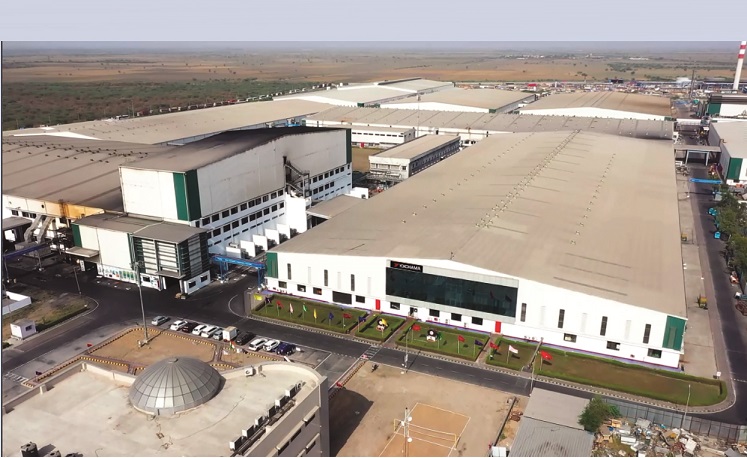
“Having two R&D centres will accelerate and intensify our innovation while learning best practices and continuously improve our overall performance,” Ravasio explained. The collaboration has already yielded practical benefits, with engineers able to combine Yokohama OTR casings (the structural base of the tyre) with Goodyear OTR tread compounds to enhance tyre performance.
The dual-centre approach addresses the complex technical challenges in OTR tyre development. These products must withstand extreme operating conditions while delivering optimal performance metrics that directly impact customers’ operational costs. As Ravasio puts it, “OTR tyres remain a complex assemblage of diverse technologies and solutions to deliver the required performance.”
Innovation priorities are driven to address changing customer needs for performance, sustainability and service. Industry pressure towards ‘Faster/Further/Heavier’ operations creates greater stress on tyre manufacturers to produce products capable of supporting more rigorous applications while being reliable and cost-effective.
MARKET DYNAMICS AND CUSTOMER EVOLUTION
Different principles from consumer tyres drive the OTR tyre business. Buyers – mainly from the mining, construction and infrastructure sectors – prioritise the total cost of ownership, which presents opportunities for manufacturers focused on durability and service.
“The OTR tyre market is very dynamic by nature. The industry has always been driven by the best cost of ownership,” Ravasio said. “The products, services and solutions provided must help our customers to optimise their operations.”
This emphasis on operational efficiency has grown stronger as customers are under pressure to be more efficient and less environmentally aggressive. Environmental concerns now influence the choice of tyres, prompting manufacturers to develop solutions that offer both performance and environmental friendliness.
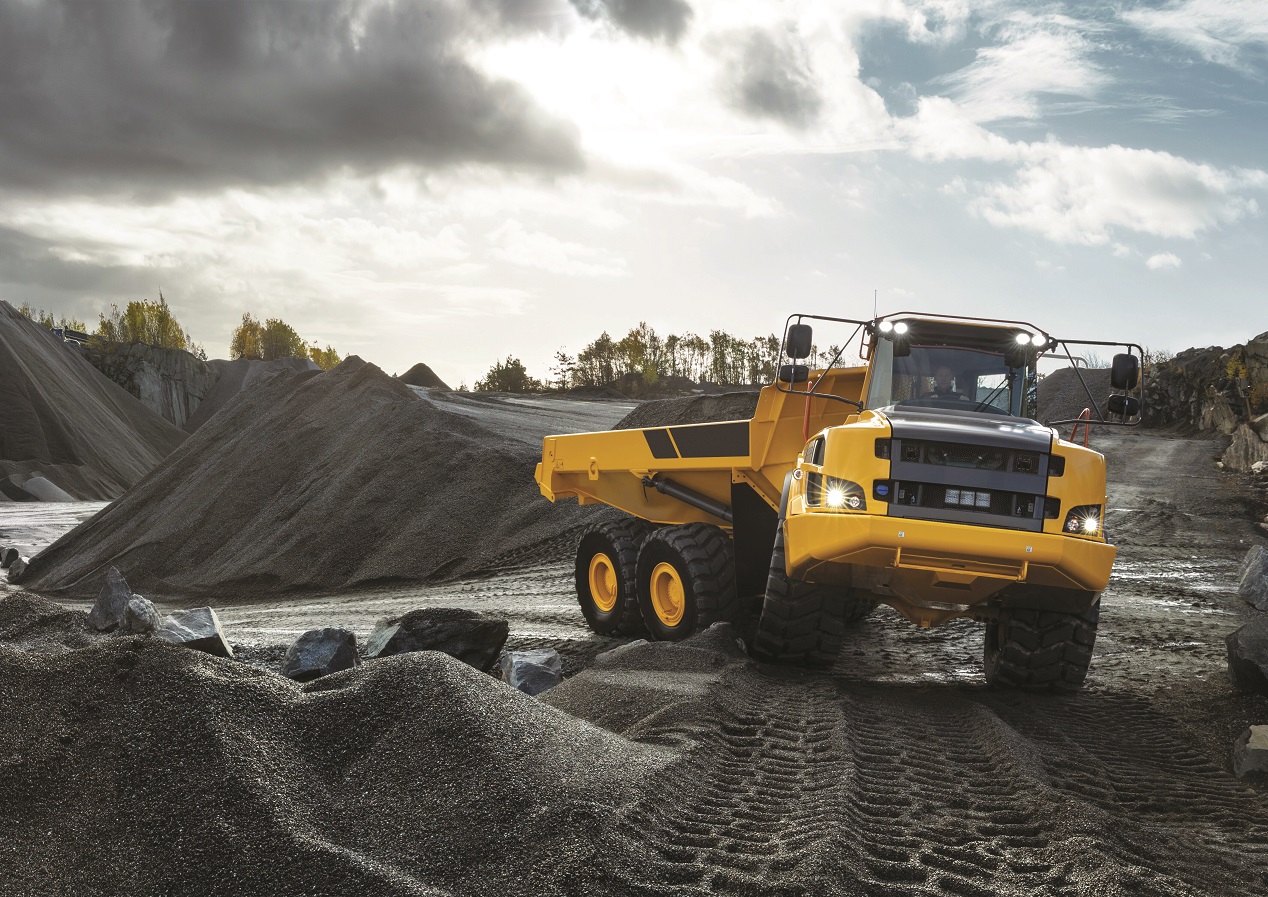 Yokohama’s sustainability strategies involve lower-resistance compounds, improved materials, energy-efficient manufacturing and total retreading solutions. It has the industry’s sole OTR retread factory owned by a tyre manufacturer, and through this, it offers customers the opportunity to extend tyre life and minimise waste.
Yokohama’s sustainability strategies involve lower-resistance compounds, improved materials, energy-efficient manufacturing and total retreading solutions. It has the industry’s sole OTR retread factory owned by a tyre manufacturer, and through this, it offers customers the opportunity to extend tyre life and minimise waste.
INTEGRATION CHALLENGES AND OPPORTUNITIES
Successfully integrating two large tyre operations presents significant operational and cultural challenges. Yokohama’s approach prioritises continuity for both customers and employees during the transition period.
“Our immediate priorities are and always will be our customers and our employees,” Ravasio emphasised. “For our customers, we aim to ensure a smooth transition, business continuity and a combined, more comprehensive portfolio of products, services and solutions to support them in their business growth.”
Employee integration focuses on creating development opportunities within a larger global organisation. Yokohama retained all Goodyear OTR personnel, recognising that their expertise and customer relationships represent much of the acquisition’s value.
“The critical parts of this acquisition were the IP knowledge, the experience and the people more than the equipment and the products. We kept all of that,” Ravasio said. The company has established a global leadership team combining experienced executives from both organisations to design the integrated structure and manage the transition process.
FINANCIAL TARGETS AND GROWTH STRATEGY
Yokohama prioritises market share gains and customer satisfaction over raw revenue for the merged OTR business. The growth strategy focuses on targeted investments in key geographies and technologies to enhance performance and quality at a cost-effective level.
The financial effect of the acquisition will start to be reflected in Yokohama’s consolidated performance from the first quarter of 2025. The company is now determining the exact earnings contribution as the integration continues.
Ravasio’s appointment to the post of president of the merged OTR operations marks a commitment by Yokohama to aggressive expansion. Ravasio reports to Nitin Mantri, Co-Chief Operating Officer and Head of the Off-Highway Tyre Unit, and will leverage his global tyre industry expertise to lead the next phase of growth.
“I’m humbled and excited to take on this important role at Yokohama, a company focused on growth and expansion,” Ravasio said upon his appointment. “We have a great future ahead, with the best associates in the industry and an outstanding value proposition to serve our customers.”
FUTURE MARKET POSITION
The long-term development curve of the global OTR tyre market underpins Yokohama’s ambitious expansion goals. The development of world infrastructure and the mineral extraction needs of the unfolding green economy transition are expected to sustain demand for heavy-duty tyres in various applications.
Yokohama aims to capitalise on OTR market growth to steal share from larger rivals. By combining Yokohama’s operations, Goodyear’s customer base and expertise and targeted manufacturing investment, executives believe they have a winning formula.
“As we invest in growth, our expansion strategy is based on the right location and the right technology/equipment to deliver top performance and quality and the right cost,” Ravasio explained.
The global reach of the company offers flexibility to supply customers in diverse markets while maximising production and distribution networks. With secure positions in complementary geographic locations and product categories, the integrated operation can provide end-to-end solutions to multinational customers engaged in multiple markets.
INDUSTRY OUTLOOK AND COMPETITIVE RESPONSE
The next three to five years will pose a challenge to Yokohama’s capacity to implement its aggressive growth strategy in a more competitive market. Its peers will not surrender market share without reacting to Yokohama’s improved competitive footing.
Achievement will depend on continued technological progress in tyre compounds, manufacturing techniques and digital technology to achieve progressively higher performance standards. The development of the industry towards more sustainable, more technologically sophisticated products presents opportunities as well as challenges for all producers.
“In the today and tomorrow of the OTR tyre market, it will be crucial to continue innovating in compounding, manufacturing processes and digital technologies to meet the evolving and stringent needs of the industry,” Ravasio observed.
Yokohama’s dual R&D centres and expanded global presence provide tools to compete effectively. Still, execution will determine whether the company can achieve its goal of becoming the world’s second-largest OTR tyre supplier.
For now, the company expresses confidence in their strategy and capabilities. As Ravasio puts it: “We look forward to celebrating it when we will be a strong number two in the near future.”
Koelnmesse Once Again Named Germany’s Top Sustainable Trade Fair Venue
- By TT News
- December 10, 2025
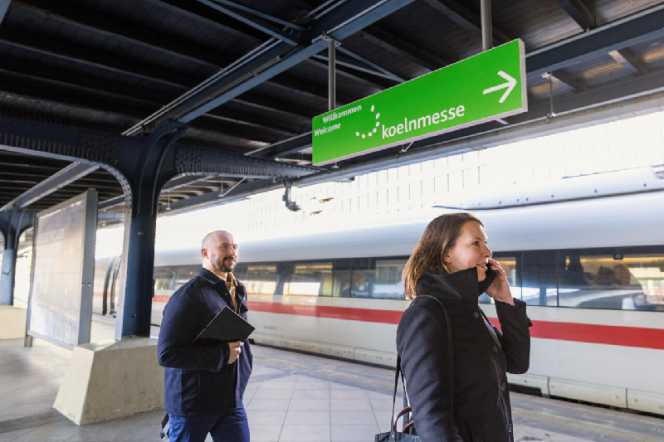
Koelnmesse has reaffirmed its status as Germany’s premier trade fair venue for sustainability, securing the top position for the second consecutive year in the ‘Pioneers in Sustainability 2025’ study. Conducted by ServiceValue in collaboration with the F.A.Z. Institute, this research employed artificial intelligence (AI) to analyse approximately 6.4 million online mentions from 2023 to 2025, evaluating thousands of companies across environmental, social and economic sustainability criteria as well as innovation. The repeated accolade underscores Koelnmesse’s influential role in advancing sustainable practices within the event sector.
The company’s strategy is guided by clear objectives, notably achieving a climate-neutral energy supply by 2030. Significant infrastructure investments are turning this ambition into reality. These include commissioning Cologne’s largest inner-city photovoltaic installation and transitioning the extensive venue to fossil-free geothermal energy. Further advancements are visible across operations, from energy-efficient lighting and ventilation systems to an expanded electric vehicle charging network. Koelnmesse also implements intelligent logistics, promotes resource-efficient stand construction with circular materials and drives comprehensive waste reduction efforts, collectively enhancing the ecological footprint of its events.
Gerald Böse, President and Chief Executive Officer of Koelnmesse, said, “Every initiative that highlights the public resonance of sustainable business practices is welcome. Bringing together ecological, social and economic responsibility is central to our work – and this balance is embedded firmly in our corporate strategy. By offering resource-efficient services and investing consistently in innovative solutions, we enable our customers to make their trade fair participation more sustainable. This creates added value both for our partners and for the future-oriented development of the events industry. The positive public perception of this progress sends an important signal and provides motivation for the company’s continued transformation.”
Rodolfo Comerio Named Among Italian Industrial Excellences
- By Sharad Matade
- December 10, 2025
Rodolfo Comerio, the Italian manufacturer of calendering systems for rubber and thermoplastics, has been named among the “100 Italian Excellences”, a government-backed initiative recognising companies viewed as contributors to the country’s industrial and cultural standing. The award was presented at a ceremony in the Sala della Regina of Palazzo Montecitorio in Rome, attended by senior institutional representatives.
The recognition follows the firm’s recent designation as a Lombard Excellence and reflects its position in a specialised segment supplying machinery to global rubber and plastics producers. The Montecitorio event also highlighted a range of businesses and individuals selected for contributions in areas such as innovation, industrial capability and social responsibility.
The weekend brought a second accolade for the company. Linglong Tire, the Chinese manufacturer, named Rodolfo Comerio its “Best Supplier of Calendering Lines”, reaffirming the pair’s longstanding commercial relationship. Alessandro Bonfanti, the group’s sales manager for the rubber division, received the award, supported by colleagues from the company’s Chinese operations. This follows an “Excellent Partner” award presented earlier in the year as part of Linglong’s 50th-anniversary celebrations. Images released from the event show Bonfanti alongside Linglong president Wang Feng at a partner conference.
Nicola Fedele, the company’s sales and marketing managing director, said the awards reflected decades of investment in engineering capability. “These are not just awards,” he said. “They are proof of a leadership built over decades through innovation, precision, and mutual trust. We are delighted and deeply proud to share this achievement, which belongs to every member of the Rodolfo Comerio team.” He added that the group’s success was driven by its employees’ “passion and constant commitment”.
Rodolfo Comerio, founded in northern Italy, supplies calendering lines used in rubber processing and thermoplastic production. The company said the recognition strengthens its long-term objective of maintaining Italian engineering expertise in global markets. The dual awards also illustrate the continued importance of Italian machinery suppliers in the international tyre and rubber industries, where advanced processing equipment remains integral to expansion plans at manufacturers such as Linglong.
Hankook Overhauls Laufenn Website In Push For Stronger Global Brand Presence
- By TT News
- December 10, 2025

Hankook Tire & Technology has redesigned the official website of Laufenn, its associate tyre brand, as the South Korean group seeks to bolster the marque’s visibility in key international markets and create a more uniform digital presence across regions.
The update, unveiled in Korea, introduces a reorganised main page intended to clarify Laufenn’s brand message and improve navigation. Hankook said the refreshed layout is designed to present the brand’s technological capabilities and quality standards more directly, while simplifying access to core services.
Enhancements include new video and image displays, a persistent banner function and an interface aimed at improving usability. A “Find a Dealer” tool has been added to guide customers to Hankook’s domestic retail network, including its T’Station service centres and TBX outlets for truck and bus tyres.
The site now also carries sections summarising performance test results and awards from European automotive publications, along with information on original equipment supply. Hankook has integrated Laufenn’s official social media feeds and a consolidated news area to create what it describes as a centralised channel for brand communication.
The company plans to extend the redesign to 21 countries — including markets in Europe, North America and Asia — by February 2026 to ensure greater consistency across its global digital touchpoints.
Laufenn, introduced in 2014 at the SEMA Show in the United States, is positioned as Hankook’s value-focused global brand. It is sold in more than 100 countries and recorded sales of about 9m units last year, with expectations of reaching around 10m this year. Its range spans passenger vehicles and commercial transport, targeting varying road conditions and driving requirements.
Hankook said Laufenn is increasingly emphasising digital channels to reach customers who may be less familiar with tyre brands. Recent marketing initiatives include a series of global brand films and collaborations with online content creators, with further digital engagement planned.
The Invisible Giant: How Bekaert Became India’s Most Indispensable Partner Of The Tyre Industry
- By TT News
- December 10, 2025

Tyres may appear simple, but behind their strength and resilience lies a web of intricate engineering and hidden reinforcements. At the heart of this complexity are tyre cords, materials that ensure safety, performance and durability while rarely being noticed. For India’s fast-growing tyre industry, companies like Bekaert have become essential partners, combining global expertise with local innovation. Through decades of investment, technical excellence and sustainable practices, Bekaert has embedded itself deeply into the industry’s transformation, helping shape safer, lighter and more efficient tyres.
In the vibrant industrial heart of Pune, Maharashtra, a Belgian company quietly celebrates a remarkable milestone. Few may realise it, but most journeys on India’s roads, from daily commutes to long-distance drives, are supported by Bekaert’s invisible touch. Through its advanced tyre reinforcement technologies, Bekaert helps make mobility across the country more reliable, efficient and safe. Over the past 25 years in India, the steel wire and advanced materials specialist has mastered the art of being what it calls ‘invisible, yet indispensable’– a philosophy that has made it one of the leading enablers of India’s modern tyre industry.
Every tyre represents a complex engineering trade-off: it must maintain road grip, bear substantial loads and withstand road hazards at higher speeds. The critical but invisible component? Steel cords are embedded within the rubber structure. These high-performance cords prevent tyre deformation during cornering, distribute cargo weight without compromising structural integrity and maintain dimensional stability at high speeds. Without steel reinforcement, modern tyres would fail under the mechanical stresses of everyday use – making these concealed cords essential to road safety. Bekaert, through continued innovation in steel cord technology and close collaboration with tyre manufacturers, ensures this critical structure performs reliably under the most demanding conditions.
“This philosophy – invisible, yet indispensable – reflects Bekaert’s strategy of deep technical expertise and close collaboration with customers to deliver critical, high-quality tyre reinforcement solutions. By understanding industry challenges and unique local conditions, Bekaert develops highly specialised, often custom solutions integral to tyre safety and reliability for more specific local needs,” explains Roopak Karnik, Managing Director, Bekaert Industries Private Limited.
Bekaert didn’t become a global leader in steel wire transformation overnight. The company has spent over 70 years refining its craft across international markets. But it’s India’s story that is more recent – and arguably more interesting. When Bekaert arrived 25 years ago, it was simply a wire supplier. Today, it has helped reshape an entire industry. The company’s partnerships with Indian tyre manufacturers proved critical during the country’s shift from bias to radial tyres, a transition that elevated not just Bekaert’s business but also strengthened competitive standing of India’s entire tyre sector on the global stage.
THE LONG GAME: OVER 25 YEARS OF STRATEGIC INDUSTRY FIRST MOVER
With over 150 years of global expertise and a strong legacy of innovation across continents, Bekaert has been a pivotal force in advancing the global tyre industry. Confident in the potential of the Indian market, Bekaert began manufacturing in India in 2001, strategically positioning itself as a first mover to introduce cutting-edge solutions to a rapidly transforming industry landscape.
“In 1997, Bekaert began its journey in India by trading various products, including steel cord manufactured, globally. Bekaert traditionally has been an early mover in the growth regions and was the first steel cord company to set up manufacturing facilities in China, Indonesia and India,” Karnik tells.
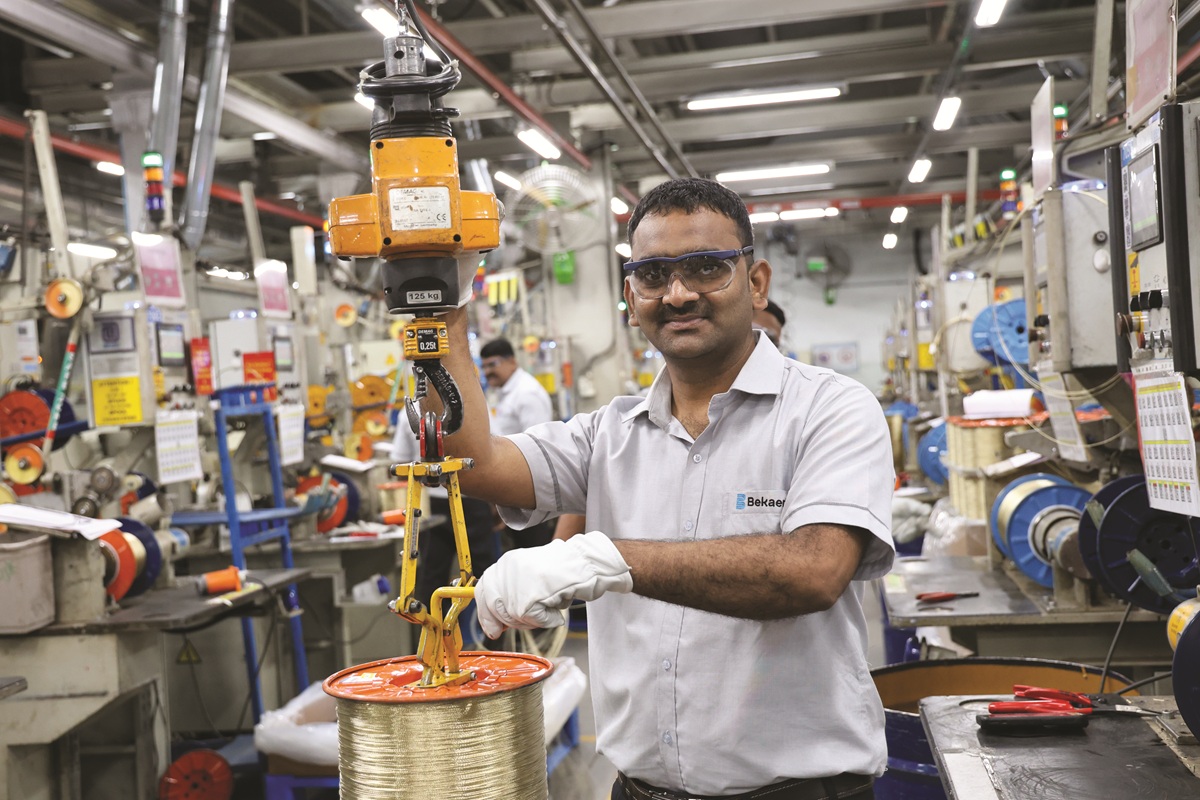
This initiated a methodical expansion that mirrored India’s own industrial transformation. By 2001, recognising the potential of India’s emerging radial tyre market, Bekaert established its first tyre reinforcement plant with a modest 5,000-tonne capacity. This step marked a significant shift from Bekaert’s initial phase of local sales, representing not just an investment in production but a bet on India’s automotive future at a time when most commercial vehicles still ran on bias tyres.
Recognising the uniqueness of the Indian infrastructure evolution, logistics model and transportation requirements, the next major milestone came in 2010 with a local R&D Tech and Engineering Centre in Ranjangaon, ‘dedicated to India-specific tyre needs’. This signalled Bekaert’s commitment to being more than a multinational supplier – it aimed to be a true partner in India’s industrial development.
“At Bekaert, we’ve evolved beyond being just a manufacturer. From creating over 1,000 local jobs to having our global Technology Centre and manufacturing plant in Pune, we work hand-in-hand with customers to co-create solutions before challenges even arise. With our technical division and 24/7 support, we are committed to delivering comprehensive, integrated solutions and addressing any issues our customers face on time. Our goal is simple: be the partner our customers turn to first, backed by local expertise and global experience,” Karnik explains.
Recognising the growth in infrastructure and the development of local steel manufacturing capabilities, Bekaert invested in a plating line to provide the Indian market with a fully integrated plant. This investment has provided the tyre industry with an extremely reliable, flexible and dependable end-to-end local supply chain. The strength and reliability of this local supply chain were proven during the Covid-19 pandemic and again in 2022, when many less integrated supply chains struggled to keep pace with industry demands.
As Bekaert marks its 27th year in India, the company has evolved from a trusted supplier to a strategic partner. Under Karnik’s leadership, Bekaert’s Indian operations now serve as a global hub for services and innovation, reflecting the company’s deepening commitment to both local and international customers.
Bekaert has always been at the forefront of being a partner to its customers, and it is resonated by JK Tyre & Industries Ltd. “As pioneers of radial tyre technology in India and the first to introduce truck radials in the country, JK Tyre shares a longstanding and valued partnership with Bekaert. Our collaboration spans a few decades, during which JK Tyre played an instrumental role in encouraging Bekaert to establish its manufacturing presence in India. Together, we have worked extensively on advancing steel tyre cord technologies, continually setting benchmarks in innovation and quality. Both JK Tyre and Bekaert have been at the forefront of introducing cutting-edge technologies to India, making our partnership especially relevant in today’s context of Atmanirbhar Bharat or the Make in India initiative. These national priorities align well with our shared vision of strengthening India’s self-reliance in critical manufacturing sectors,” says a JK Tyre spokesperson.
“We are confident that with Bekaert’s expanded capacity, robust technology and strong support team, this partnership will continue to contribute meaningfully to JK Tyre’s growth and to India’s journey towards becoming the world’s third-largest economy,” adds the JK Tyre spokesperson.
THE RADIALISATION REVOLUTION
Bekaert has been an integral part of India’s shift from bias to radial tyre journey since the manufacture of the country’s first radial tyre, providing cutting-edge steel cord reinforcement solutions that continue to set industry standards today.
When Bekaert arrived in India in 1997, only five percent of commercial vehicle tyres were radials.
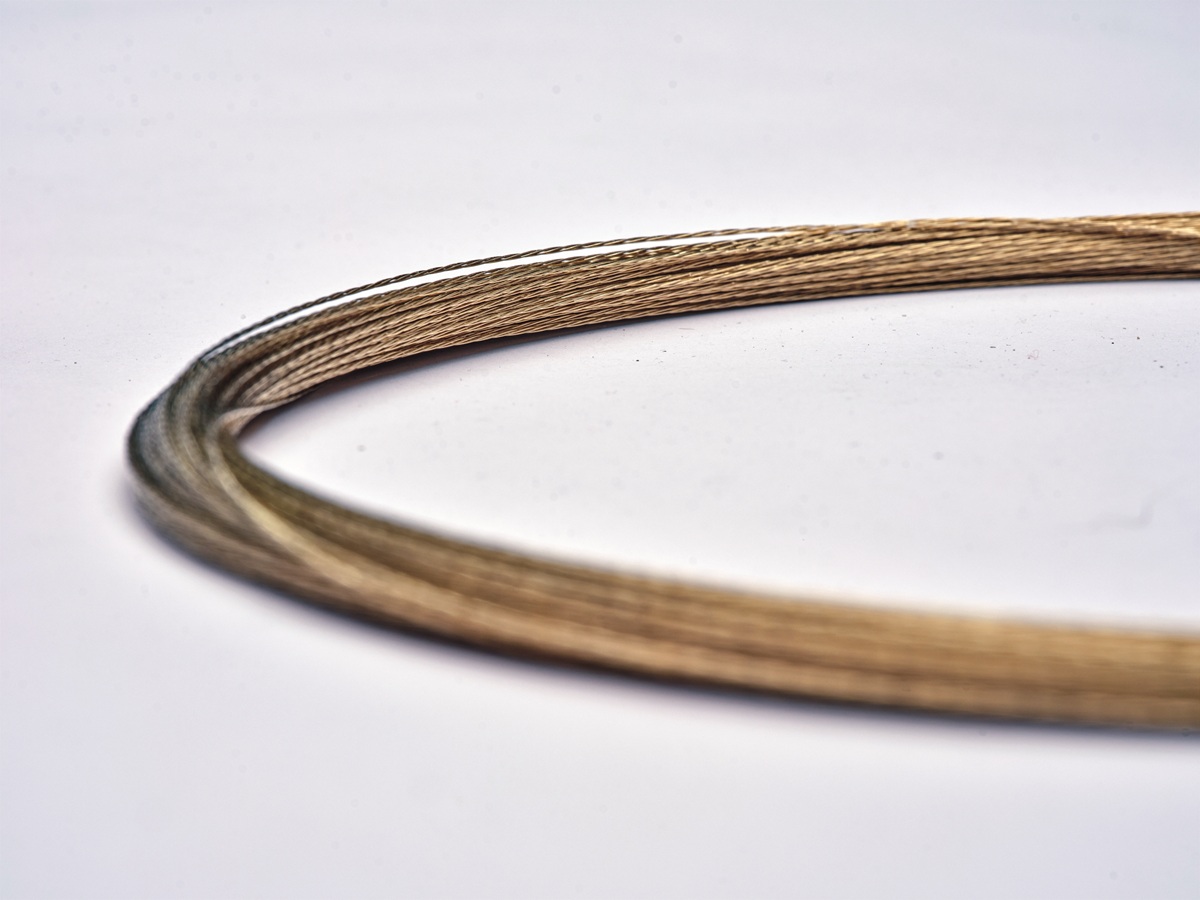
“Bekaert has been instrumental in the radialisation of India’s commercial vehicle tyre market, which has grown from five percent in 1998 to 55 percent in 2023. This shift demanded tyres handle higher loads, improve fuel efficiency and enhance safety. By co-developing solutions, providing technical expertise, joint testing, collaborative innovation and even customised wire rod and cord solutions, we have enabled tyre manufacturers to transition smoothly, improve product performance and meet growing consumer expectations for durability, handling and safety. This has been possible due to a strong local footprint for both research and manufacturing,” says Raj Kalra, SVP, Strategic Marketing and Sales RR at NV Bekaert.
Elaborating on the industry perspective on this transformation, the Automotive Tyre Manufacturers Association (ATMA) says, “Bekaert has been a trusted and longstanding partner in the radialisation journey of the Indian tyre industry. India’s market is unique in its requirements, demanding differentiated and performance-driven raw materials to cater to diverse road conditions and customer expectations. In this context, close collaboration between partners such as Bekaert and the tyre industry has been instrumental in developing technologically advanced solutions, particularly in the area of high-performance steel cord reinforcement, which has significantly contributed to enhancing tyre safety, durability and fuel efficiency. By driving innovations that reduce material usage, improve recyclability and lower the overall carbon footprint of tyres, Bekaert has aligned itself with the broader environmental priorities of the tyre industry. Their efforts complement the industry’s push towards cleaner mobility, energy efficiency and global competitiveness.”
The technical challenges were immense. Radial tyres demand far superior reinforcement compared to their bias counterparts. They must withstand higher stresses, maintain structural integrity under varying loads and deliver the durability that commercial vehicle operators in India’s challenging conditions demand.
LOCAL PRESENCE, GLOBAL EXCELLENCE
Bekaert’s success in India relies on achieving true localisation while leveraging its global innovation powerhouse and expertise. The approach to local production capability exemplifies an effective industrial strategy.
Along with support of manufacturing plants strategically located across regions, local production enables Bekaert to shorten response times, tailor specifications and quickly adapt to market shifts. Unlike imports, Bekaert offers immediate response, agile development and a lean supply chain. By implementing vendor-managed inventory programmes, it minimises inventory in the pipeline, ensuring that products meet the needs of Indian tyre manufacturers.
The advantages extend far beyond logistics. Indian tyre manufacturers have distinct product requirements based on the diverse vehicle types and challenging road conditions in the country. “Bekaert delivers a unique proposition to Indian manufacturers. With the combination of decades of global experience with deep local market knowledge and leveraging its state-of-the-art Technology Centre at the Ranjangaon campus, Bekaert works in close partnership with Indian customers to engineer tyre reinforcement solutions specifically calibrated for local road conditions and operational demands, spanning the entire spectrum from two-wheelers to heavy-duty mining vehicles,” says Jim Dobson, SVP, Technology and Quality at Bekaert.
Bekaert’s in-house engineering department, Bekaert Engineering, designs, manufactures, installs and maintains equipment for its production plants worldwide. This global expertise is a cornerstone of the company’s operations, ensuring that production processes are efficient, standardised and consistent across all facilities. Close collaboration with R&D allows machinery and product innovations to advance in tandem, while maintaining control over its own equipment enables Bekaert to continuously enhance quality, efficiency, safety, sustainability and cost-effectiveness.
In India, this strong global engineering backbone has supported the company’s growth journey – providing the technological foundation and know-how needed to scale efficiently in a complex market. At Bekaert, keeping the customer at the centre of its business isn’t just a philosophy – it’s a strategic advantage that guides every decision, from where facilities are located to how innovation is delivered.
Local production is a prime example of this commitment. Bekaert’s combination of local and global presence insulates the customers from the pressures arising out of geopolitical volatility and trade barriers. This puts Bekaert in the best position to offer a cost-effective supply chain optimising solution.
“The key success factors in the Indian market differ significantly from those in international markets due to variations in consumer behaviour, infrastructure, regulations and competitive scenario. Apollo Tyres has been successful in the Indian market due to its strong dealer and distribution network in the country, which is crucial for reaching customers in the tier II/III cities and rural areas. It is a well-established brand in India synonymous with quality and durability, along with its strong relationships with Indian OEMs, which boosts volumes and brand visibility. In the markets outside India, Apollo Tyres’ focus on building brand equity and meeting international safety, performance and sustainability standards (EU labelling norms) has been the key. Having an established brand, like Vredestein, and manufacturing presence has helped it enter and expand in Europe,” says Apollo Tyres’ spokesperson.
“We build our entire ecosystem around customer needs – aligning our footprint, capabilities and innovation pipeline to deliver maximum value to our partners in minimum time,” says Amit Kulkarni, Sales Director at Bekaert Industries.
Highlighting the strategic value of such partnerships, Apollo Tyres’ spokesperson adds, “Bekaert has a manufacturing footprint which aligns with Apollo’s production locations, allowing local buying at a reduced carbon footprint. It has the added advantage of being a full-range player with a focus on innovation and new products.”
The contrast with import-based models is evident. Imported solutions often follow a ‘reactive, one-size-fits-all approach’, while Bekaert’s local presence enables proactive customisation and rapid adaptation to Indian conditions.
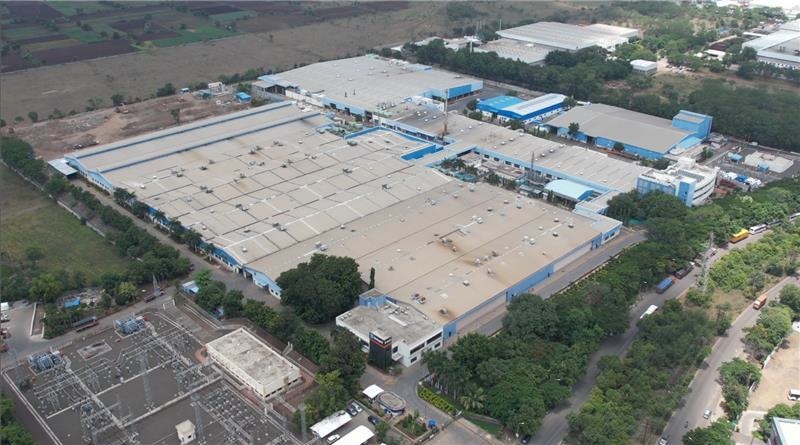
ADVANCING LOCAL CAPABILITIES THROUGH TECHNOLOGY AND PARTNERSHIP
Bekaert’s long-term investment in India reflects a clear ambition: to strengthen the country’s position in the global tyre supply chain through advanced technology, deep customer collaboration and a strong local footprint. The recent expansion of its Pune facility, with a state-of-the-art coating line, demonstrates this commitment to combining global expertise with local manufacturing excellence.
“We are building technology nodes, not just factories. Each region is equipped to deliver innovation and advanced solutions, ensuring our customers benefit from consistent quality and expertise wherever they are,” says Karnik.
Bekaert focuses on transferring global technology and best practices to India. Local operations work hand in hand with global engineering teams to ensure the same standards of performance, safety and sustainability. The Pune site integrates next-generation steel cord processing that reduces Scope 2 emissions, eliminates water-intensive pickling and works on the concept of zero liquid discharge, supporting the industry’s broader sustainability ambitions.
Equally important is the close technical partnership between Bekaert and its customers. Engineers are embedded within development teams, enabling seamless communication between shop floor and R&D. Joint validation programmes, testing and simulation processes help tyre manufacturers bring new designs to market faster and with greater reliability. This hands-on collaboration ensures that products meet global standards while being optimised for India’s specific road and performance conditions.
As one of India’s leading tyre manufacturers, BKT has experienced the benefits of this partnership first-hand. A company spokesperson explains: “When BKT was founded, our focus was strongly oriented towards export. We began engaging with international markets very early, meeting highly demanding customers and operating under strict quality standards. That experience shaped us: it pushed us to invest in technology, strengthen our manufacturing processes and establish ourselves as a trusted global brand. In recent years, however, we have chosen to look more closely at our home market. We’ve recognised the changing landscape in India. With increasing demand for advanced products and a growing emphasis on performance and reliability, we’ve brought our international expertise to bear on these new
challenges. Today, our strength in India lies exactly in this combination: expertise developed in international markets and the ability to adapt it to local needs, supported by a widespread distribution network and customer-focused service. Bekaert is not just a supplier for BKT; it is a long-term technology partner. Its high-performance steel cord plays a vital role in ensuring the strength, durability and reliability of our tyres across all applications. Bekaert’s support is crucial in the development of high-performance steel cords specifically engineered for large mining truck tyres, which are used in both global and Indian markets.”
This collaboration reflects the strength of partnership-driven innovation, where local manufacturing meets global expertise. Through shared technology, joint validation and sustainability-driven practices, Bekaert continues to reinforce the foundation of India’s tyre industry and its journey towards global competitiveness.
Through strategic decentralisation, a focus on sustainability and close integration with local manufacturers, Bekaert demonstrates how global expertise can strengthen India’s tyre industry, delivering reliable, high-performance solutions that support mobility across the country.
CUSTOMER-CENTRICITY IN THE DIGITAL AGE
Bekaert’s strategy is built around creating long-term value while exploring new markets and technologies. The company’s vision is to ‘Establish the New Possible: Safe, Smart, Sustainable’, and it achieves this by strengthening its core business in steel wire applications, pioneering beyond steel into new materials and solutions and ensuring outcomes that are sustainable and positive for the future.
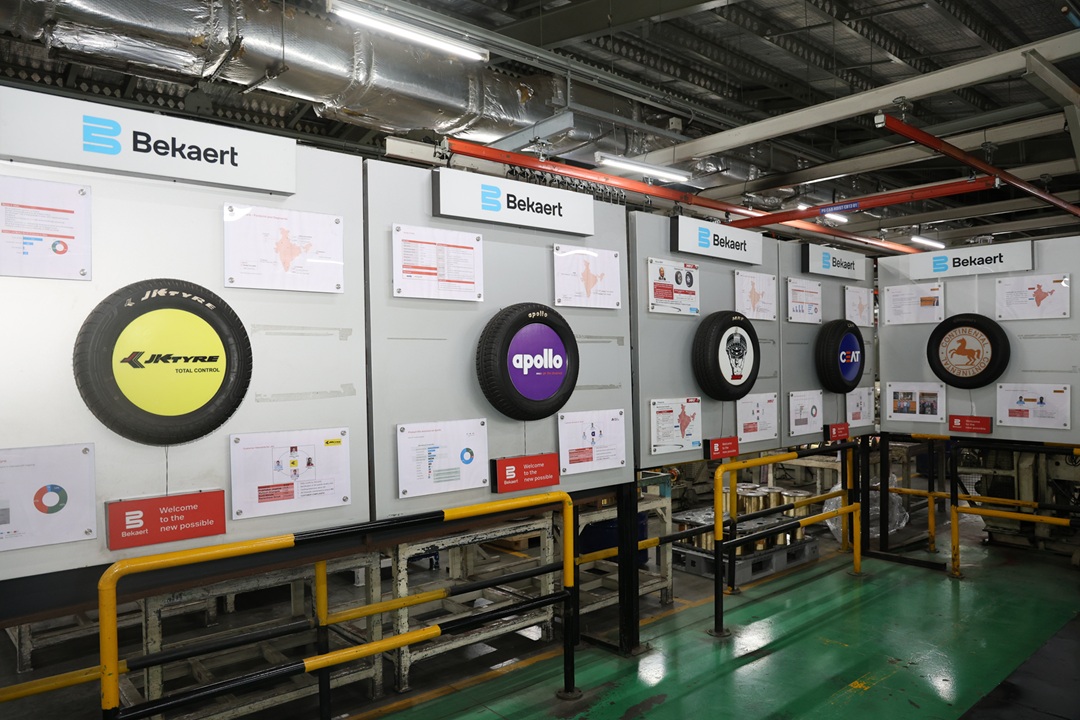 Customer-centricity is not just a slogan at Bekaert. It drives every decision, from boardroom strategy to the shopfloor. The company has designed programmes that link operations directly to customer expectations, such as the Customer Steward Programme. This initiative empowers factory operators to take accountability for quality and consistency, ensuring that every product leaving the facility meets the high standards customers expect.
Customer-centricity is not just a slogan at Bekaert. It drives every decision, from boardroom strategy to the shopfloor. The company has designed programmes that link operations directly to customer expectations, such as the Customer Steward Programme. This initiative empowers factory operators to take accountability for quality and consistency, ensuring that every product leaving the facility meets the high standards customers expect.
Initiatives like ‘Always Committed, Best Quality, Customer Delight’ (ABC) implement quality improvements in ways that customers can experience directly. Part of Bekaert’s broader Management System, ABC integrates manufacturing excellence with customer satisfaction on the production line. It instils a customer-first mindset across global operations. Teams are able to identify and resolve issues quickly while maintaining consistent quality and aligning closely with business objectives.
Bekaert’s Zero Loss approach complements this focus on customer value. Embedded within a continuous improvement framework that includes Lean and Six Sigma methodologies, Zero Loss aims to eliminate waste, reduce variation and achieve zero defects. By linking critical business needs directly to shopfloor practices, operators understand how their actions contribute to the company’s overall objectives, strengthening quality and efficiency at every stage.
Beyond internal processes, Bekaert engages with external innovators through corporate venturing. Its ‘Better Together’ philosophy enables rapid integration of new technologies and helps customers stay ahead of market shifts. These collaborations are particularly vital for innovation in sustainable construction and the energy transition, where emerging technologies require agile partnerships to create meaningful impact.
With over 70 years in the automotive sector, Bekaert maintains a forward-looking approach. The company develops products ahead of market demand and supports the transition to ‘New Mobility’ by providing materials for safer, smarter and more sustainable vehicles. This approach considers every stage from raw material sourcing to end-of-life recycling.
Customers recognise and value this collaborative approach. As CEAT explains, “Bekaert is an integral part of our innovation journey, whether by developing newer belt wire with improved performance, sustainability or service levels. The close collaboration enables us to study in depth the integrity and durability of our steel cord packages in a tyre under various service conditions. It also helps us to exchange and understand the global trends in steel wire technology, tyre technology and emerging trends. Bekaert’s support is always at hand whether be it in jointly driving process excellence, sustainable transportation of raw material and lean management, and is well appreciated. Sustainability is gaining focus; we look forward to further encouraging sustainable initiatives with Bekaert.”
“The approach ensures that innovations are not just technically advanced but also aligned with the real-world needs and specifications of Indian OEMs and their tyre suppliers, leading to more impactful solutions. In India’s rapidly evolving automotive market, where OEMs are shortening their product cycles and constantly updating vehicle models, this responsiveness provides a crucial competitive advantage,” Karnik says.
Through deep customer partnerships, continuous improvement and a forward-thinking approach to innovation, Bekaert demonstrates how a global company can remain close to local needs while shaping the future of mobility in India.
WIRE ROD EXCELLENCE THROUGH PARTNERSHIP
Bekaert’s approach with India’s steel sector exemplifies a forward-looking model of industrial collaboration, where the company prioritises expertise and partnership over ownership. By leveraging relationships with domestic steel producers, Bekaert helps advance specialised steel production capabilities critical for high-performance applications.
“Bekaert’s strength lies in its global expertise combined with strong local sourcing relationships in India. Instead of operating its own wire rod production plants, we have partnered with the growing Indian steel sector,” explains Namrata Salunke, Head of Procurement at Bekaert Industries.
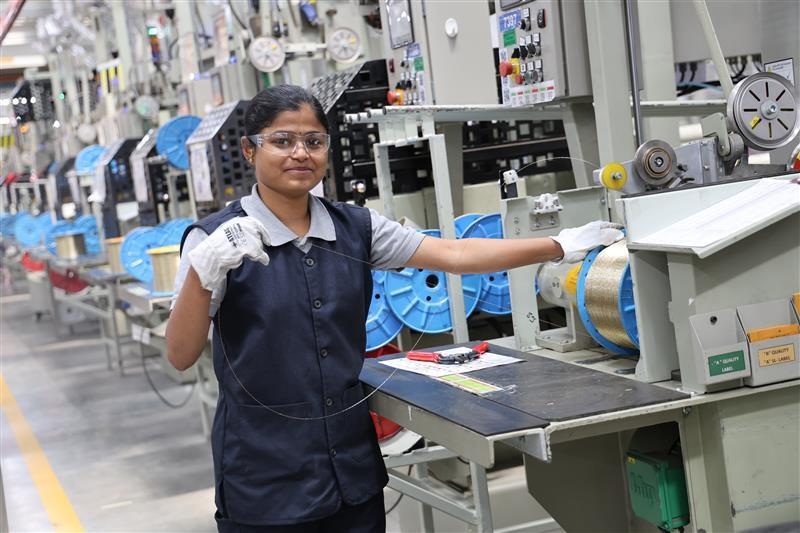
Rather than simply procuring standard materials, Bekaert positions itself as a technical partner to Indian steel mills. The company works closely with them to develop the specialised wire rod grades required for demanding applications such as steel tyre cords. This partnership involves technology support, process control improvements, quality system development and process optimisation. As a result, domestic steel producers can manufacture high-performance materials that meet stringent global automotive standards.
Bekaert’s engagement goes beyond specifications to the joint development of innovative steel grades, addressing the evolving needs of the tyre industry. By sharing deep application knowledge and quality benchmarks, the company helps Indian steel manufacturers optimise their capabilities to produce consistent, defect-free wire rod that meets international standards. Sustainability is also embedded in the collaboration, with efforts to reduce Scope 3 emissions and source wire rod with high recycled content, supporting a circular economy.
“By sourcing wire rod locally, we minimise dependency on imports, reduce lead times and collaborate on process efficiencies and material innovations, leading to a better overall operational efficiency. This capability strengthens our value proposition by combining technical expertise with operational agility, allowing us to efficiently co-develop innovative solutions with Indian tyre manufacturers. We at Bekaert are extremely happy and privileged to participate in the government effort relating to the Make in India movement, not only through investment and job creation but also by helping the core steel manufacturing sector produce high-specification wire rods in India,” Salunke says.
PARTNERING FOR SUSTAINABLE SUPPLY CHAINS IN INDIA
For Bekaert, sustainability is more than a responsibility: it is a strategic imperative woven into every aspect of its business. Guided by the Science Based Targets initiative (SBTi), the company has set ambitious goals to reduce its carbon footprint, transition to renewable energy and embed circular economy principles both globally and locally.
In India, these commitments translate into initiatives that address the country’s sustainability challenges while aligning with global climate objectives. Bekaert goes beyond supplying high-quality steel cords, offering complete solutions that combine products, services and technical expertise. This ensures that customers do not just receive a component; they gain a partner who supports them across the entire tyre development cycle.
KEY INITIATIVES DRIVING IMPACT
HIGH RECYCLED CONTENT (HRC) STEEL
Bekaert maximises the use of recycled steel to reduce reliance on virgin resources, lower carbon emissions and contribute to circular economy principles. Third-party verification confirms and certifies the percentage of recycled content in Bekaert’s manufactured and sold steel cord, ensuring traceability, transparency and confidence for tyre manufacturers reporting on recycled content.
LNG-POWERED LOGISTICS
With India’s industrial demand and logistics-related emissions on the rise, Bekaert has introduced liquefied natural gas (LNG) trucks to reduce its transport carbon footprint. This step aligns with the country’s broader transition to cleaner energy sources.
RENEWABLE ENERGY INTEGRATION
By early 2023, Bekaert had signed three power purchase agreements (PPAs) to source electricity from solar farms in India, securing 46.5-megawatt peak of solar capacity. These projects are expected to offset more than 60 percent of the company’s electricity-related emissions in India.
RESOURCE EFFICIENCY IN OPERATIONS
Sustainability is embedded at the plant level through global initiatives like ‘You Know Watt’, which drives continuous improvements in energy and resource consumption. Efforts include energy-efficient production processes, water recycling programmes and optimised material usage.
“Our targets include reducing carbon intensity, increasing recycled content usage and further optimising logistics and production efficiency in line with global and local sustainability standards,” Salunke says.
Through these initiatives, Bekaert demonstrates how a global sustainability vision can be adapted to India’s unique context, ensuring both environmental stewardship and industry resilience.
INNOVATING TYRE REINFORCEMENT FOR INDIA’S FUTURE
Over the next 5–10 years, India’s tyre ecosystem will be reshaped by multiple powerful forces: rapid EV adoption, the demand for lighter, low-rolling-resistance tyres, transparent carbon footprint reporting and Scope 3 reductions, stricter recycling and circularity regulations, geopolitically fragile supply chains and the performance expectations of higher-speed corridors and harsher climates. Bekaert’s roadmap is designed to meet these realities head-on.
The company is addressing this transformation through advanced solutions such as sustainable coatings on cords, Super Tensile (ST) and Ultra Tensile (UT) cords and its Elyta line of innovations. These solutions provide exceptionally high tensile strength while reducing material usage, enabling tyre manufacturers to produce lighter tyres without compromising safety. The result is improved fuel efficiency, lower carbon emissions and longer tyre lifespan, a critical requirement in India’s rapidly evolving market.
“The market dynamics have shifted considerably. This evolution demands tyres with superior performance characteristics, which in turn requires innovation in tyre cord technology,” Kulkarni explains.
Bekaert’s high-tensile and Elyta solutions combine premium materials with advanced design capabilities to tackle weight reduction, durability and sustainability challenges for passenger car and light truck tyres. Indian manufacturers specifically address diverse road conditions, cost-sensitive markets, the emerging EV sector and stringent environmental regulations.
“Our Elyta line combines high-performance materials with advanced design capabilities to address key challenges such as weight reduction, durability and sustainability for passenger car and light truck tyres. For Indian manufacturers, it directly addresses the realities of India’s market with rugged roads, higher vehicle speeds, fuel sensitivity and the rapid rise of EVs,” Selina FIPPL, Head of Strategy & Transformation at NV Bekaert says.
Dobson adds, “This technology allows for the use of up to 20 percent less steel and 10 percent less rubber compound in belt plies. This lets tyre manufacturers produce lighter tyres without compromising safety, improving fuel efficiency and lowering carbon emissions.” By reducing material use, tyres become lighter, lowering rolling resistance and boosting fuel efficiency. Reduced fuel consumption also supports greener manufacturing and helps automakers meet global environmental standards.
These innovations enhance durability and performance, extending tyre lifespan while minimising material waste throughout the product lifecycle.
SAFETY FIRST: BUILDING A CULTURE OF ZERO HARM
Bekaert’s approach to safety in its Indian operations reflects both global standards and local sensitivities, creating what the company describes as an ‘interdependent safety culture’.
Safety is embedded in Bekaert’s operations through rigorous training, regular audits, strict adherence to global protocols and a proactive incident-reporting culture. At the core is the company’s ‘no harm to anyone’ philosophy, which guides safety practices worldwide and is systematically applied across its Indian plants.
The programme goes beyond compliance to create genuine cultural transformation. “The programme aims to create a risk-free working environment by increasing risk awareness among all employees. It emphasises building strong Safety, Health and Environment (SH&E) leadership to steer an interdependent safety culture, where every individual takes responsibility for their own and their colleagues’ safety,” says Kiran Kale, Manufacturing Head at Bekaert Industries.
Cultural practices are firmly embedded in Bekaert’s daily operations, with continuous awareness campaigns, employee participation in safety committees and incentives that encourage safe behaviour. These measures help ensure that every employee and contractor works in a secure environment.
The company’s approach goes beyond physical safety to include overall well-being. Bekaert offers a confidential employee assistance programme, providing counselling services to employees and their families, underscoring its commitment to holistic care.
Continuous improvement drives the programme forward. “By regularly monitoring and benchmarking its practices against industry best performers, Bekaert drives continuous improvement in its SH&E performance,” Kale adds.
TALENT DEVELOPMENT AND INCLUSIVE GROWTH: BUILDING INDIA’S INDUSTRIAL FUTURE
Bekaert’s investment in local talent development reflects a long-term commitment to building capabilities that extend far beyond the company’s immediate needs, contributing to India’s broader industrial competitiveness.
“Bekaert invests in local talent through structured training programmes, apprenticeships and continuous professional development like its Global and Young Graduate programmes,” says Sayali Awachat, HR Head of Bekaert Industries. “These initiatives immerse participants in a hands-on learning environment over 18 months, with international rotations that expose participants to diverse markets, technologies and customer needs – developing future leaders.”
Unlike generic training access, Bekaert focuses on applied learning on the shop floor and at the technology centre. Young engineers are engaged in live technical workshops, customer trials and co-development projects where they learn to solve real challenges in reinforcement technology, quality control and sustainability. This close integration of learning with practice ensures that Bekaert talent is industry-ready from day one.
“We don’t just equip our people with online learning tools; we immerse them in environments where they can co-create solutions with customers. Through initiatives like the Elevation Leadership and Learning Journey for first-time managers, and in-house certification programmes tailored to reinforcement technology, we prepare our teams to lead change in a fast-evolving market,” adds Awachat.
Technical expertise receives focused attention. “Technical workshops, in-house certification programmes and collaborations with academic institutions ensure that employees gain hands-on expertise in reinforcement technology, quality control and innovation practices. This builds a robust pipeline of skilled professionals for the Indian tyre sector,” Awachat says.
Bekaert leverages external partnerships to boost knowledge sharing. By collaborating with research centres and universities worldwide, the company provides its Indian team with access to cutting-edge insights. Combined with internal expertise, these collaborations help Bekaert India remain at the forefront of material science and tyre reinforcement technology.
Bekaert’s initiatives for talent development are built on the core belief of empowering individuals to ‘dare to go beyond and achieve their full potential’.
Bekaert’s inclusion strategy is an integral part of its ‘Put People First’ sustainability pillar, aiming to create an equitable, diverse and safe environment for all employees. The approach combines top-down corporate goals with bottom-up employee-led initiatives, fostering an inclusive culture where every team member has the opportunity to grow, contribute and thrive.
Through its integrated talent development and inclusion programmes, Bekaert is not only preparing its workforce for tomorrow’s challenges but also contributing to the long-term resilience and competitiveness of India’s industrial ecosystem.
LOOKING AHEAD: THE INVISIBLE GIANT SHAPING INDIA’S MOBILITY FUTURE
As Bekaert looks towards its next decade in India, the company’s priorities reflect both the opportunities and challenges of a rapidly evolving industrial landscape. Over 25 years, Bekaert has quietly become indispensable to India’s mobility ecosystem, reinforcing millions of tyres daily with its steel cords, yet remaining purposefully invisible. This strategic invisibility stems from a relentless focus on technical excellence, deep customer partnerships and long-term value creation over brand visibility.
“Bekaert’s priorities for India over the next 5–10 years will be to focus on sustainable growth, leveraging local strengths and aligning with the country’s evolving mobility and infrastructure landscape. As per our philosophy, ‘invisible, yet indispensable’, we will remain an indispensable partner to the tyre industry, quietly delivering co-created, high-performance reinforcement solutions that meet critical industry needs,” says Annie Xu, Divisional CEO RR, NV Bekaert.
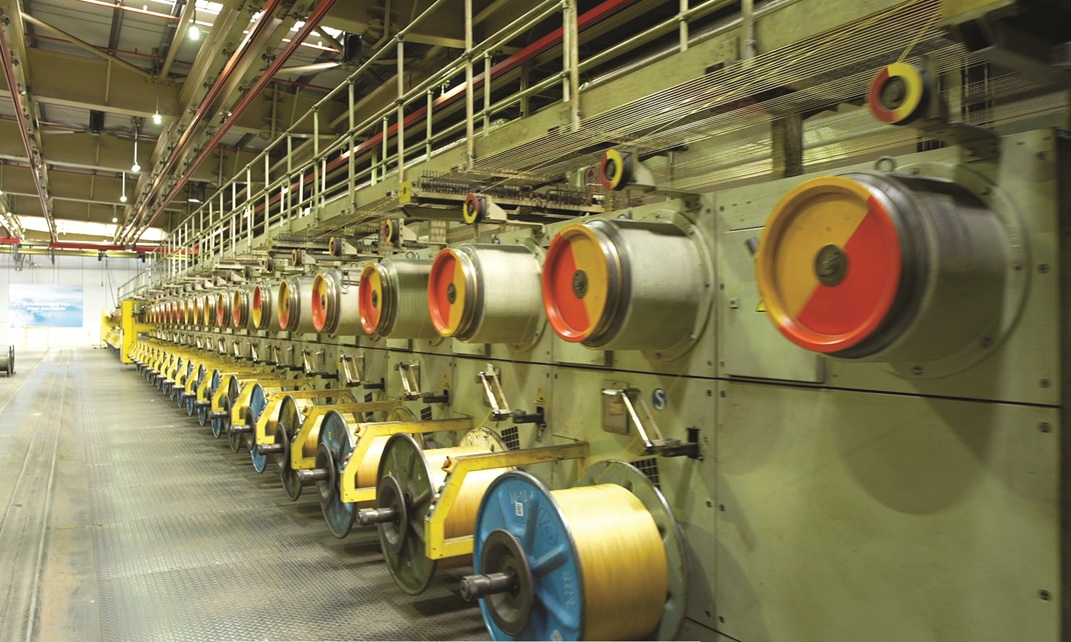 Innovation remains central to this vision. “Bekaert will continue to focus on advance testing and simulation ecosystem that will help our customers reduce time to market and continue to be the customers’ preferred choice for development and supply fully Indian products. The company aims to co-develop technologies that address India-specific challenges, from high-speed performance in extreme temperatures to enhanced durability on diverse road conditions,” Dobson adds.
Innovation remains central to this vision. “Bekaert will continue to focus on advance testing and simulation ecosystem that will help our customers reduce time to market and continue to be the customers’ preferred choice for development and supply fully Indian products. The company aims to co-develop technologies that address India-specific challenges, from high-speed performance in extreme temperatures to enhanced durability on diverse road conditions,” Dobson adds.
Bekaert’s ambitions extend beyond operational efficiency, positioning sustainability as a strategic opportunity to set industry benchmarks, share best practices and advance India’s circular economy goals. “In the coming decade, we’ll deepen our commitment to India’s tyre industry by placing customers at the heart of innovation,” Karnik says. “Through advanced solutions, sustainable practices, smart manufacturing and talent development, we aim to remain a trusted partner driving long-term value.”
To realise this vision, Bekaert is doubling down on both manufacturing capacity and technological capabilities. “India remains a priority market for us, and with Ranjangaon now at almost terminal capacity, we will explore options for growth in the coming years,” Xu says. “We’re also continuing to invest heavily in our Technology and Innovation Centre at Ranjangaon, creating an advanced product testing and simulation ecosystem that will help our customers reduce time-to-market and stay ahead in an increasingly competitive landscape.”
This expansion aligns with the broader national vision of Atma Nirbhar Bharat, as echoed by MRF: “Bekaert’s expansion of its Pune facility, along with its strategic backward integration investments, demonstrates a strong commitment to this shared goal. These initiatives not only enhance India’s supply chain resilience but also strengthen the technological foundation of the Indian tyre industry. As a trusted partner, Bekaert continues to deliver innovation, sustainability and consistent quality.”
Bekaert’s holistic vision encompasses economic, social and industrial impact. Talent development, innovation and inclusion remain core pillars, ensuring a workforce capable of co-creating solutions with customers, leading change and sustaining the tyre industry’s competitiveness in India.
In an era dominated by corporate grandstanding, Bekaert presents a different model: the power of being invisible yet indispensable. Its sustained investment in local capabilities, advanced technologies and sustainable practices positions both the company and its partners for success as India’s mobility revolution accelerates.
Bekaert’s forward stance is clear: be present locally, lead in cord technology critical for EVs and high-speed India, embed with customers to compress development time and make sustainability measurable within the tyre, ensuring that its philosophy of being invisible yet indispensable continues to define the next chapter.
Through quiet, consistent impact, Bekaert is not just supplying steel cords; it is empowering Indian tyre manufacturers to realise their global growth ambitions, strengthening local capabilities, driving innovation and supporting the nations journey towards mobility excellence, one tyre at a time.







Comments (0)
ADD COMMENT